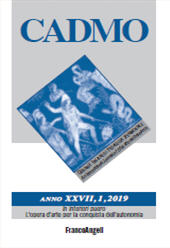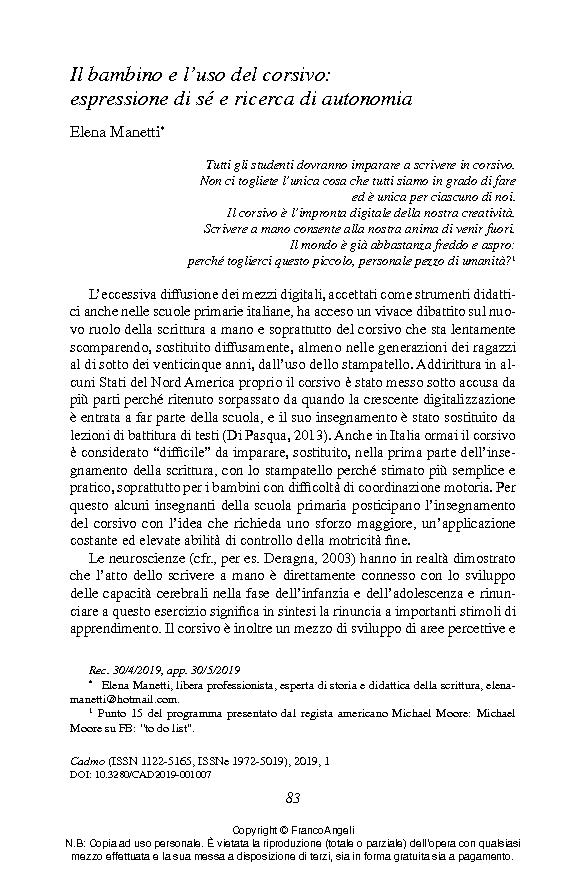Il bambino e l'uso del corsivo: espressione di sé e ricerca di autonomia
83-97 p.
The widespread use of digital devices in primary Italian schools, often accepted as teaching tools, is one of the reasons for the lively debate on the role of handwriting, especially cursive, that is slowly surrendering to manuscript block capitals. On the other hand, in recent years school reforms have paid more attention to socio-cultural issues than to the formal learning of handwriting skills: the school has shifted from teaching rules and diligence to stimulating pupils' creativity and problem solving. Even the school programmes for primary schools provide no specific guidelines on how to teach handwriting skills, thus contributing to wrong habits or, even worse, to problems like dysgraphia. According to Cornoldi (1999), 13% of the students in Italian schools are low-achievers, while Vertecchi (2016) shows how mental operations are reducing their effectiveness due to the (ab)use of technologies.
Though the digitalization represents a great opportunity, schools need to find a way to make the two aspects of writing meet: the hand that writes codified signs allowing communication and the ability to type complex texts on a computer. [Publisher's text]
-
Articles du même numéro (disponibles individuellement)
-
Informations
Code DOI : 10.3280/CAD2019-001007
ISSN: 1972-5019
KEYWORDS
- Handwriting, writing skills, dysgraphia, low-achievers, technological devices



